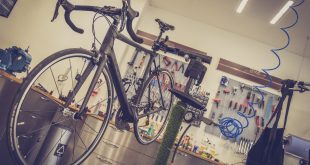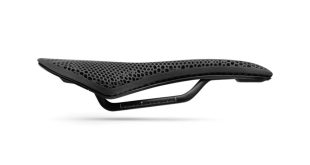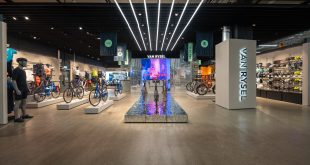Jaguar, the car sponsor of the Team Sky cycling team – is working on Bike Sense, a sensor technology that alerts Jag drivers to "unseen hazards" on the road – when a cyclist is spotted the driver is alerted to their presence with a bicycle bell sound. And "dooring" could be prevented with the use of haptic "buzz" technology that will alert the driver not to open their door when a cyclist is about to overtake.
Drivers also get vibration alerts on the accelerator pedal when pedestrians and cyclists are in front of the car. The Jaguar tech joins similar cyclist and pedestrian sensor technology already being used by Volvo and other car companies.
At the moment Bike Sense is a concept technology, rather than being available commercially. It is being developed at Jaguar Land Rover’s Advanced Research Centre in the UK.
Sensors on the car will detect when another road user is approaching and identify it as bicycle or motorbike. Bike Sense will then make the driver aware of the potential hazard before the driver sees it.
Jaguar said Bike Sense uses lights and sounds that the driver will "instinctively associate with the potential danger."
To help the driver understand where the bike is in relation to their car, the audio system will make it sound as if a bicycle bell – or motorbike horn – is coming through the speaker nearest the bike, so the driver immediately understands the direction the two-wheeler is coming from.
If a bicycle or motorbike is coming up the road behind the car, Bike Sense will detect if it is overtaking or undertaking (for instance, when a driver is stuck in traffic – there is no law against cyclists undertaking) and the top of the car seat will "tap" the driver on the left or right shoulder. The idea is that the driver will then instinctively look over that shoulder to identify the potential hazard.
As a cyclist gets closer to the car, a matrix of LED lights on the window sills, dashboard and windscreen pillars will glow amber and then red as the bike approaches. The movement of these red and amber lights across these surfaces will also highlight the direction the bike is taking.
Dr Wolfgang Epple, Director of Research and Technology, Jaguar Land Rover, said: "Human beings have developed an instinctive awareness of danger over thousands of years. Certain colours like red and yellow will trigger an immediate response, while everyone recognises the sound of a bicycle bell.
"Bike Sense takes us beyond the current technologies of hazard indicators and icons in wing mirrors, to optimising the location of light, sound and touch to enhance this intuition. This creates warnings that allow a faster cognitive reaction as they engage the brain’s instinctive responses. If you see the dashboard glowing red in your peripheral vision, you will be drawn to it and understand straight away that another road user is approaching that part of your vehicle."
What about in those places – such as central London – where cyclists often outnumber motorists? Will a Jag driver be overwhelmed with sounds, lights and vibrations? No. The tech will know when there are many cyclists in the vicinity.
Jaguar said Bike Sense would also be able to identify "hazards" that the driver can’t see.
_
https://www.youtube.com/watch?v=_rw3Cia9WZ0
"If a pedestrian or cyclist is crossing the road, and they are obscured by a stationary vehicle for example, the car’s sensors will detect this and draw the driver’s attention to the hazard using directional light and sound," said a company statement.
"If the driver ignores the warnings and presses the accelerator, Bike Sense will make the accelerator pedal vibrate or feel stiff, so the driver instinctively knows not to move the car forwards until the hazard has been avoided."
It’s perhaps instructive that Jaguar calls cyclists and pedestrians "hazards" rather than just "road users".
"By engaging the instincts, Bike Sense has the potential to bridge the gap between the safety and hazard detection systems in the car and the driver and their passengers," said Dr Epple. "This could reduce the risk of accidents with all road users by increasing the speed of response and ensuring the correct action is taken to prevent an accident happening."
 BikeBiz Bicycle and cycling retail news
BikeBiz Bicycle and cycling retail news



